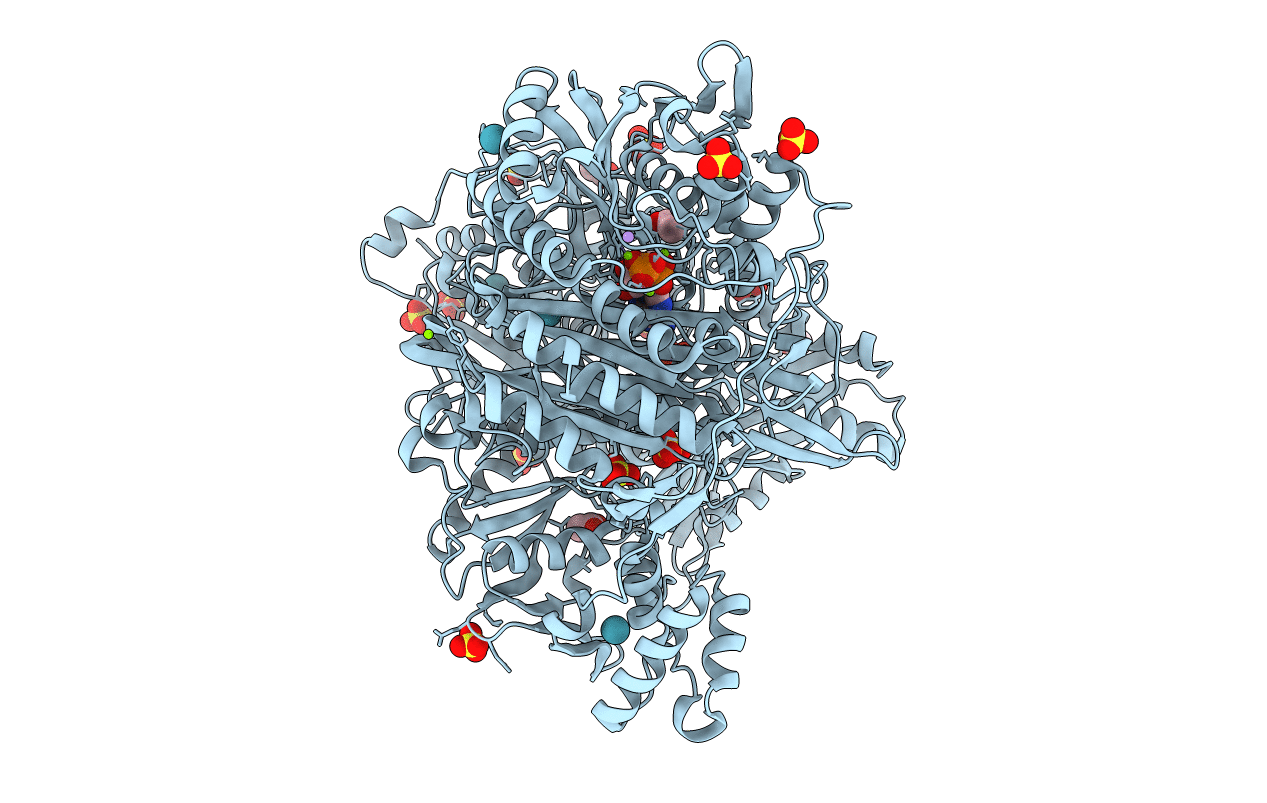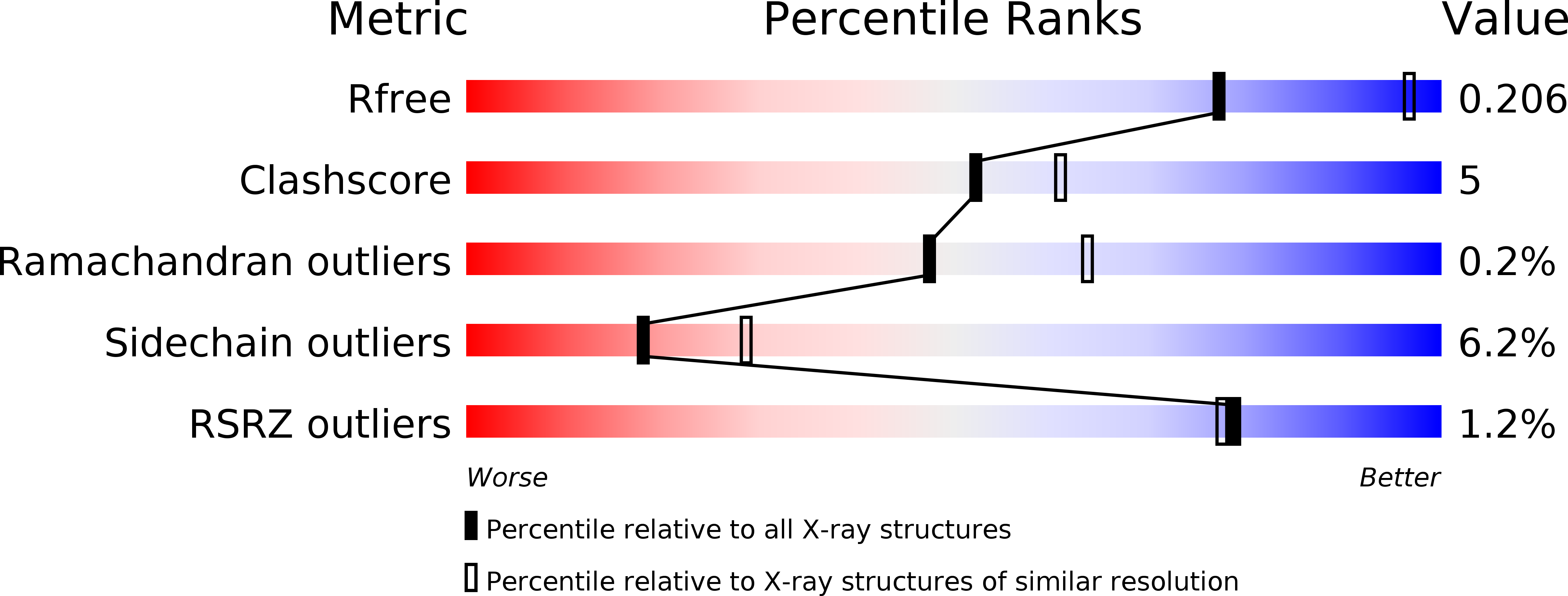
Deposition Date
2013-08-28
Release Date
2013-12-11
Last Version Date
2023-11-08
Entry Detail
PDB ID:
4MGH
Keywords:
Title:
Importance of Hydrophobic Cavities in Allosteric Regulation of Formylglycinamide Synthetase: Insight from Xenon Trapping and Statistical Coupling Analysis
Biological Source:
Source Organism:
Salmonella typhimurium (Taxon ID: 99287)
Host Organism:
Method Details:
Experimental Method:
Resolution:
2.65 Å
R-Value Free:
0.20
R-Value Work:
0.15
R-Value Observed:
0.15
Space Group:
P 65


